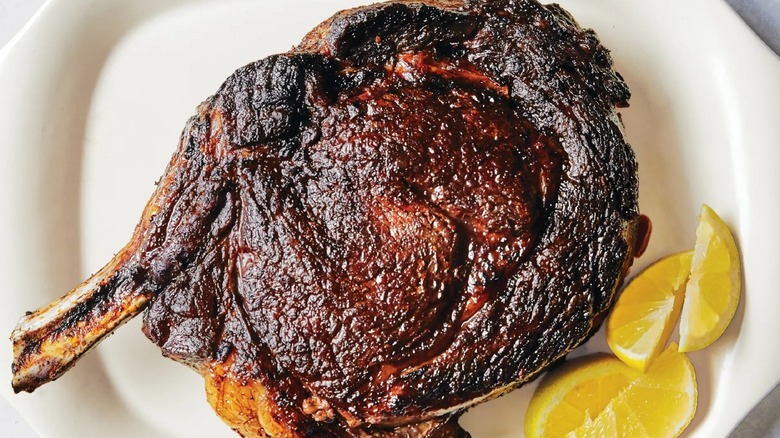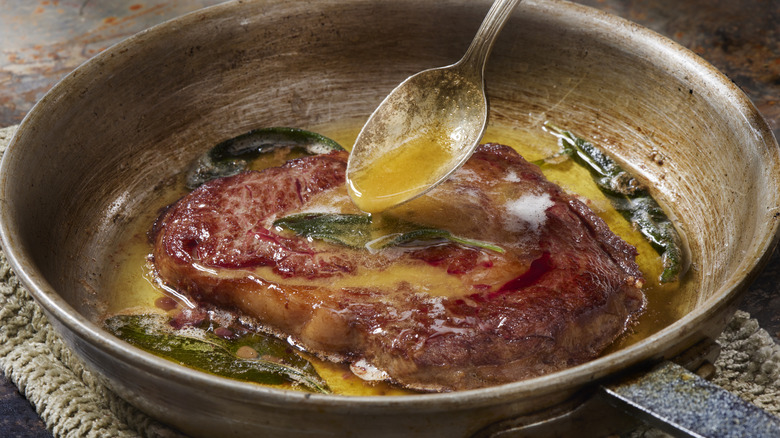Lacquered Steak Is The Key To A More Flavorful Crust
While lacquer generally refers to the shiny sealant we use to coat our wood decks, it's also a culinary term applied to the flavorful crust of a steak. Lacquered steaks mimic the glossy coating that their namesake implies, using a tasty reduction to create the same sap-like appearance of shellacked wood and a crispy exterior to contrast the steak's juicy interior.
The lacquer is essentially a sauce or marinade either made from scratch containing a blend of vinegar, fermented sauces, sugar, and aromatics, or your favorite store-bought steak sauce doctored with some sugar or maple syrup reduced in a pan for a thicker coating. However, instead of letting the steak sit in the marinade, you will lacquer the steak in the sauce as it cooks. You essentially baste the steak in sauce as you cook it. The heat will help caramelize the sugar in the marinade, which will create a shimmering, crispy crust while also infusing the steak with umami-rich seasonings to enhance its meatiness and juiciness.
Before you begin basting the steak, you should sear it or grill it to obtain the smoky, charred marks that provide the foundation for the lacquer. Then, you'll either move the steak to a cooler part of your grill or lower the heat of the pan to begin the basting process. Over low to medium heat, you'll baste the steak, flipping it every one to two minutes until cooked to medium rare.
The best steaks for lacquering
Most recipes for lacquered steaks call for a bone-in ribeye. The ribeye is a cut of steak known for its high marbling and tender chew. It's also a thicker cut that will stand up well to the heat of a grill. High marbling equates to a flavorful, umami-rich steak that will certainly benefit from the complementary umami notes presented by the fish sauce and soy sauce commonly found in a lacquer marinade.
Ribeye isn't the only cut of steak you can use for the lacquer method. A strip steak is another well-marbled thick cut that is flavorful, juicy, and less expensive than a ribeye. Whichever cut of steak you choose, basting is the second and final layer of seasoning; a hearty sprinkling of salt and pepper should always be the foundation. Salt will help tenderize the steak and create a juicy center during the initial sear while also accentuating its natural flavors.
If beef isn't on the menu, you could also use the lacquering method for seafood steaks. Lacquered tuna steaks are a popular item, using a different set of spices and aromatics like shallots and lemon grass with a reduction of soy, fish sauce, and brown sugar or even orange juice. Since fish cooks much more rapidly than beef, you'll marinate the fish in the lacquer sauce along with brushing it with lacquer while it finishes cooking.

